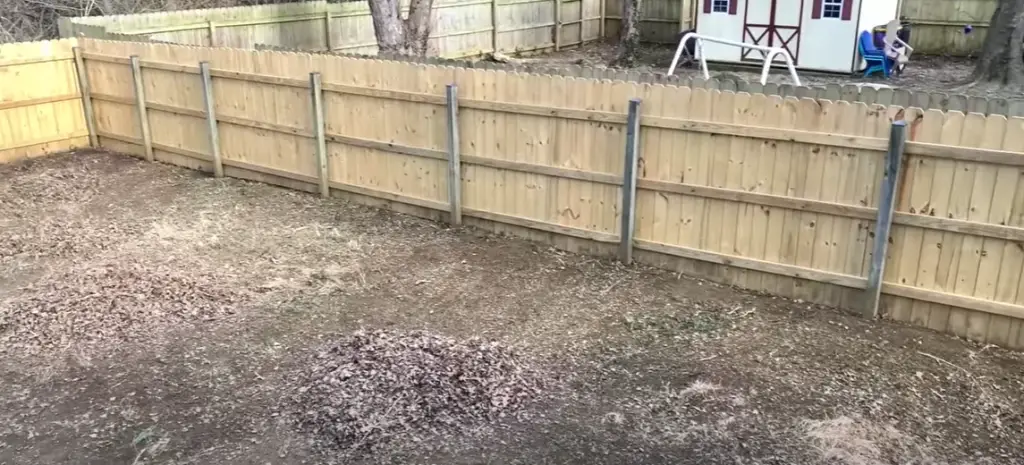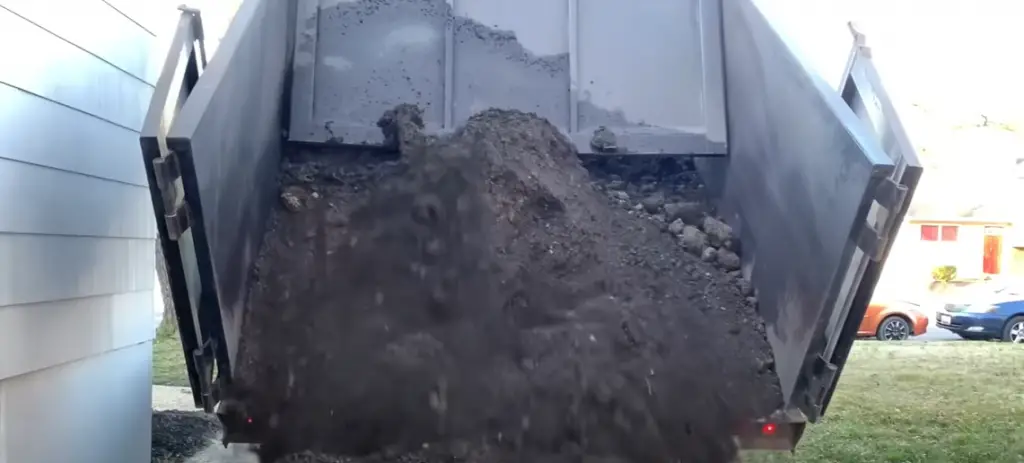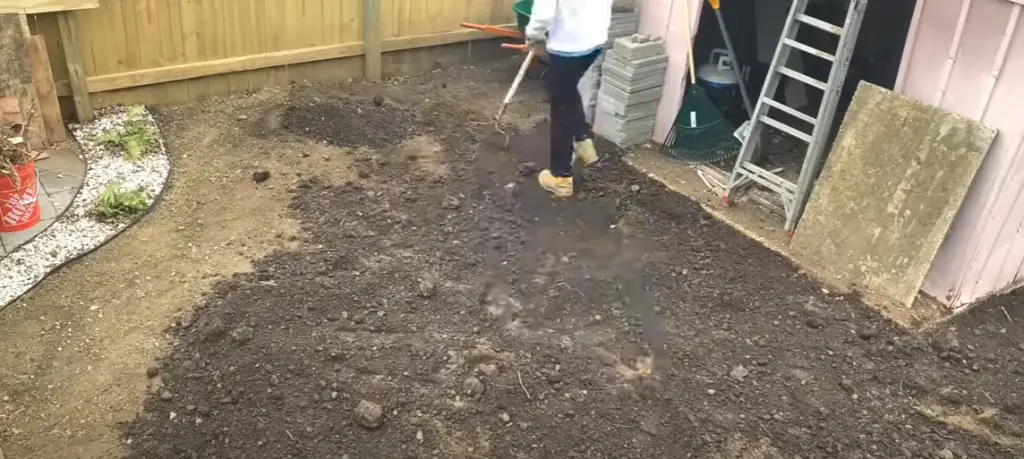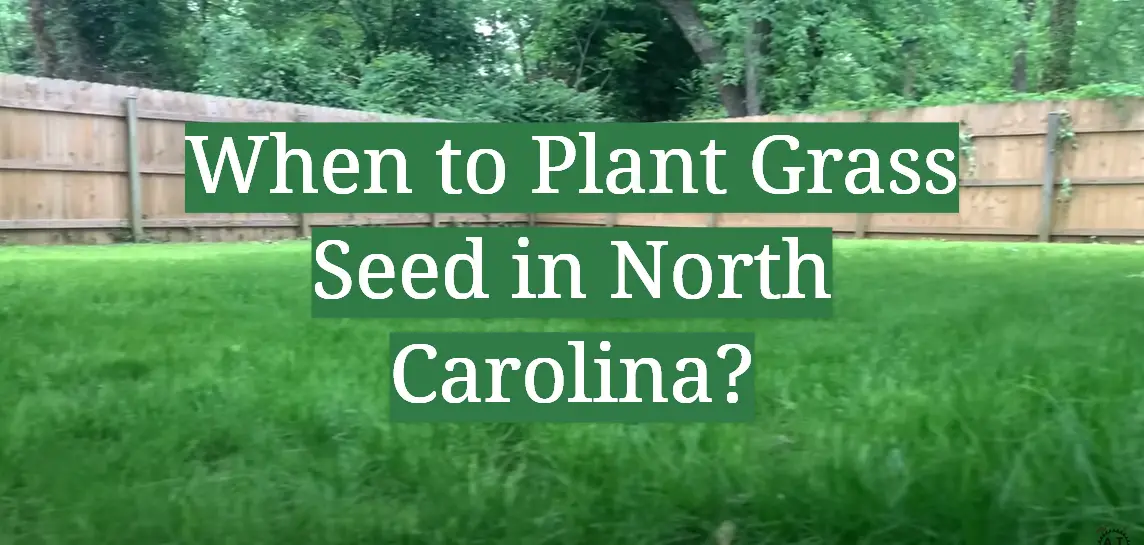Do you want to create a lush, green lawn in North Carolina and don’t know when the best time is to plant grass seed? Believe it or not, there is actually an ideal window for planting grass depending on where you live. This blog post will explain all about when to plant your grass seed in North Carolina so that you can have a healthy lawn all year round! We’ll cover topics such as what type of grass grows best, how much sun exposure your lawn needs daily, and other key considerations before starting the planting process. Read on to learn everything you need to know about growing some truly exceptional turf!
What To Consider Before Picking A Grass Seed?
When selecting a grass seed, there are several factors to consider. They include:
Climate
Selecting a seed suitable for the local climate is important if you want your lawn to thrive. Certain grasses are better suited to colder climates while others prefer warmer areas. Research the climate of your area and pick a seed accordingly. [1]

Sun Exposure
Grass requires sunlight to grow, so it is important to consider the amount of sunlight your lawn receives. If you have an area with limited sun exposure, look for shade-tolerant grasses such as fescue and rye. If you plan to plant a lawn in an area that receives full sun, then Bermuda grass or zoysia might be a better choice.
Soil
The type of soil you have can also affect the type of grass seed you choose. Clay soils tend to hold moisture and require a hardier, more drought-tolerant variety such as Bermuda grass or Zoysia. Sandy soils are generally well-draining and may benefit from a more drought-tolerant variety such as fescue or rye.
Maintenance Requirements
Different types of grass require different levels of maintenance, so it is important to consider your time and budget when selecting a grass seed. For example, some varieties require frequent mowing while others are better suited for low-maintenance lawns. Make sure to select a grass seed that fits your lifestyle and budget.
Seed Quality
It is also important to select a high-quality seed for your lawn. Look for seeds with an “Organic” or “Purebred” label, as these are generally the best quality available. Avoid bulk seed mixtures, as they may contain inferior varieties.
Price
Price can be a factor when selecting a grass seed. The best quality seeds are generally more expensive, but they usually result in healthier and longer-lasting lawns. It is worth the extra cost to ensure your lawn looks great for years to come. [2]

What is the Climate in Northern California?
Northern California enjoys mild weather year-round, ranging from sunny days to dry and hot summers. It is best known for its Mediterranean climate, which offers prolonged periods of warm and dry conditions. Winters in Northern California are generally cool and rainy with occasional snowfall in the higher elevations of the mountains. Springtime typically brings a mix of temperatures with some scattered showers, and the hottest months are usually July and August. The coastal regions tend to remain cool as a result of the Pacific Ocean’s influence.
So, is this climate suitable for planting tomatoes? Absolutely! As long as you are prepared for the occasional gust of wind or unexpected rain shower, tomatoes can thrive in Northern California’s climate. They require plenty of sunlight and regular watering to ensure a healthy crop. Just remember to keep up with your plants’ needs and watch out for those gusty winds! [3]
Best Grass Seeds to Plant in North Carolina
NC boasts a diverse climate, with plenty of sunshine and the occasional rainstorm. To create a thriving lawn in this state, it’s important to pick grass seed that can withstand the weather conditions while still offering lush, green grass throughout the year. Here are several popular varieties of grass seeds recommended for North Carolina:
- Centipede Grass: Centipede grass is a popular choice for North Carolina lawns as it thrives in the state’s warm, humid climate. This type of grass seed grows low to the ground and requires minimal maintenance. [4]
- St. Augustine Grass: St. Augustine is another popular option for North Carolina lawns, as it can tolerate high levels of humidity and still remain green and healthy. It is slightly more maintenance intensive than centipede grass, though, as it needs regular mowing and fertilizer applications to stay healthy.
- Bermuda Grass: Bermuda grass is a hardy option for North Carolina lawns that grows quickly and requires minimal maintenance. This type of grass seed spreads rapidly but can be difficult to get rid of once it has established itself, so be sure to check the climate and soil conditions before planting.
- Zoysia Grass: Zoysia grass is a great option for North Carolina lawns as it can tolerate drought and mild winter temperatures. It requires minimal mowing and needs little fertilizer or water in order to thrive.
- Tall Fescue: Tall fescue is a popular option for North Carolina lawns as it can thrive in the warmer temperatures and wetter climates. This type of grass seed requires more maintenance than some of the other varieties, though, as it needs regular mowing and fertilization to remain healthy.
- Kentucky Bluegrass: Kentucky bluegrass is a hardy option for North Carolina lawns as it can tolerate extreme heat and cold with ease. This type of grass seed requires regular maintenance in the form of mowing, fertilization, and aerating in order to remain healthy. [5]

When To Plant Grass Seed In NC?
The best time to plant grass seed in North Carolina is in late summer or early fall when temperatures are lower and there is more rainfall. This will give the seeds a better chance of germinating and growing. It’s also important to prepare the soil by loosening it up with a tiller and adding fertilizer for nutrients. Once planted, keep the soil evenly moist and keep weeds from growing by mulching or using a weed barrier. [6]
Grass seed should be planted in early spring when the weather starts to warm up, but before temperatures get too hot. The soil should be prepared as described above and the seed should be spread according to the manufacturer’s instructions. Water regularly to ensure germination, but avoid over-watering, as this can cause fungal problems.
For best results, aerate your lawn a few times per year to allow oxygen, water, and nutrients to penetrate deeper into the soil. This helps prevent soil compaction and encourages healthy root growth. Additionally, it’s important to remove any thatch from the grass as this can interfere with water absorption and cause disease. [7]
What Diseases Can Grass Have?
Grass is a common sight across the world and is usually quite healthy, but it can still suffer from various diseases. Common grass diseases include brown patch, dollar spot, red thread, fairy ring, gray leaf spot and rust. Each of these diseases have different symptoms which should be examined carefully to ensure that the correct diagnosis is made.
Brown patch
Brown patch is a common fungal disease that can affect many types of grasses, but particularly those in warm and humid climates. It is most active during the spring and summer months when temperatures are high and there is plenty of moisture. Symptoms include circular patches of yellowing or browned-out grass blades, often with a pinkish discoloration around the edges.
Dollar spot
Dollar spot is another fungal disease that can affect grasses, particularly during the summer months when temperatures are high and moist conditions persist. Symptoms include small circular patches of straw-colored or yellowing grass, usually measuring a few inches in diameter. The leaf blades may have a reddish margin and the centers of the patches may contain lesions.

Red thread
Red thread is a common fungal disease that affects many types of grasses, especially during the summer months when temperatures are high and there is plenty of moisture. Symptoms include patches of red or pink discoloration along the blades of grass which may be accompanied by thinning or wilting leaves. In severe cases, infected areas may appear to be slightly girdled or matted.
Fairy ring
Fairy rings are another fungal disease that can affect grasses, especially those in moist conditions. Symptoms include circles of dark green growth surrounded by a band of dead or dying grass. This type of infection often spreads outward from the center in an arc-like pattern, giving the appearance of a fairy ring.
Gray leaf spot
Gray leaf spot is another fungal disease that can affect grasses, especially those in warm and humid climates. Symptoms include tiny grayish-brown spots on the blades of grass which may be accompanied by yellowing or wilting leaves. In severe cases, infected patches may appear to have a dark grey color with yellow margins.
Rust
Rust is a common fungal disease that can affect all types of grasses, especially during the summer months when temperatures are high and there is plenty of moisture. Symptoms include orange-yellow spots or patches on the leaves which may be accompanied by thinning or wilting foliage. In severe cases, infected areas may appear to have a rusty-brown tint. [8]
How to Make a Perfect Garden Lawn?
Making a perfect garden lawn doesn’t have to be difficult. With the right tools and materials, you can have the lush, green lawn of your dreams in no time! Here are some tips on how to make your own perfect garden lawn:
Start with a plan
The first step to making a perfect garden lawn is to create a plan. Consider the size of your garden, what plants and trees you want to include, and how much maintenance you’re willing to do. Once you have an idea of what you want your garden to look like, start researching which types of grasses work best in your climate and soil type. [9]

Prepare the soil
Once you have a plan, it’s time to start preparing the soil. To make sure your grass grows healthy and strong, turn over the topsoil in your lawn, remove any debris or large stones, and add organic matter such as compost or peat moss. This will help to improve drainage and nutrition for your grass.
Select your grass
Once the soil is prepared, it’s time to select the type of grass that will work best in your lawn. Different varieties of grass require different amounts of water and sunlight, so make sure to research which types are ideal for your climate and garden conditions. Once you’ve chosen a variety, buy high quality seeds from a reputable company and make sure to follow the instructions for planting them correctly.
Fertilize regularly
Fertilizing your lawn is essential to ensure that your grass grows healthy and strong. Different types of grass require different levels of fertilization, so be sure to research what type of fertilizer works best with your particular variety. Make sure to spread the fertilizer evenly and water your lawn frequently to ensure that it absorbs the nutrients.
Mow regularly
Mowing is important in keeping your lawn looking neat and tidy. Different types of grass have different mowing heights, so make sure to research what works best for your particular variety. Keep in mind that frequent, shallow mowing is better than infrequent, deep mowing.
Water correctly
Watering your lawn is one of the most important steps in keeping it healthy and green. Different types of grass require different amounts of water, so make sure to research which type works best for your particular lawn. Additionally, water early in the morning or late at night to avoid losing too much moisture due to evaporation.
Control weeds
Weeds can be a nuisance and take away from the beauty of your lawn. To prevent them, keep your lawn mowed short and water it deeply but infrequently. Additionally, using an organic pre-emergent weed control product before planting can help to minimize the amount of weeds in your garden. If you do find weeds, pull them out by hand or use an organic weed killer to get rid of them.
Protect your lawn from pests
In addition to weeds, insects and other pests can also be a problem for your garden lawn. To prevent them from taking over, use an organic pesticide such as neem oil or diatomaceous earth to keep them away. Additionally, make sure to keep the grass clipped short and water deeply but infrequently to discourage pests from taking up residence in your lawn.
By following these simple steps, you can have a lush and beautiful garden lawn in no time! Just remember to plan carefully, prepare the soil correctly, select the right type of grass for your climate, fertilize regularly, mow frequently and water correctly. With a bit of effort and patience, you can create the perfect garden lawn for your home. [10]

FAQs
What grass grows best in North Carolina?
The most common type of grass grown in North Carolina is Bermuda grass. It grows best in the summer months and requires full sunlight to thrive. Other types of grass that grow well in North Carolina include St. Augustine, Zoysia, Tall Fescue, Centipede and Bahia grasses.
Can you plant grass seed in the winter in North Carolina?
Yes. In fact, it’s a great time to establish grass, as long as temperatures are above freezing. Thus, late autumn and early winter are actually considered peak times for planting many types of cool-season grasses in North Carolina. The best time frame for seeding ranges from mid-October through the middle of December.
When planting grass seed in winter, it’s important to consider the weather and soil conditions. It’s best to wait until your soil temperatures are consistently above 50 degrees Fahrenheit before planting. If you’re unsure about soil temperatures, you can purchase a soil thermometer to check them or ask your local gardening center for advice.
What grass is heat tolerant in NC?
The most common type of grass that is heat tolerant in North Carolina is Bermuda grass. It does best in full sun areas and can even tolerate drought conditions. Bermuda grass should be mowed regularly to keep it looking its best, but once established, it requires very little maintenance and care. It has a deep root system which helps with water retention during dry periods. It is important to note that Bermuda grass must be watered frequently during the summer months and fertilized at least twice a year. Additionally, it does not stay green in winter so if you live in an area with cold winters, you should consider using a different type of grass.
Other types of grasses include St. Augustinegrass, Centipede grass, and Zoysiagrass. St. Augustinegrass is a warm season grass that can tolerate drought conditions and a wide range of temperatures. It should be mowed regularly and watered deeply every 7-10 days in the summer months. Centipede grass is another type of warm season grass which thrives in hot climates and requires less maintenance than other grasses.
What month does grass grow fastest?
Grass typically grows fastest during the spring and summer months. As temperatures rise, photosynthesis increases, allowing the grass to take in more energy from the sun. This increased energy helps to speed up its growth rate. However, this is not always true as other conditions such as soil type, moisture content, and fertilizer can also influence how quickly grass will grow. In areas where the temperature does not rise much, grass may only grow at a moderate rate. Proper maintenance is essential for ensuring that grass grows in an optimal manner.
Useful Video: When to plant grass seed in North Carolina
Conclusion
To sum up, there are a variety of factors to consider when deciding when to plant grass seed in North Carolina. In general, the best time is in early spring, right before or after the last frost. Throughout this post, we discussed timing relative to temperatures, soil conditions, weather forecasts, and more related to planting grass seed in North Carolina. If you decide it’s time to lay down your own grass seed, make sure you cover the basics: choose quality seed, prepare soil, sow at the specified depth, ensure steady moisture, take extra care, keep excessive foot traffic off during germination and initial establishment.
Don’t forget – contact local experts whenever necessary for help with any step of growing grass from seed! With enough planning and preparation on your end combined with guidance from local specialists if needed, you’ll have a lush green lawn full of glowing promise all year round!
References:
- https://www.myselectlawn.com/blog/how-to-pick-the-right-grass-seed-for-your-lawn/
- https://naturalawn.com/lawn-care-tips/choosing-grass-seed
- https://studycalifornia.us/life-in-california/weather-climate/
- https://www.naturesseed.com/grass-seed/north-carolina/
- https://www.outsidepride.com/seed/grass-seed/State-Lawn-Guide/North-Carolina-Grass-Seed/
- https://www.trianglelawns.com/about/our-blog/when-plant-grass-seed-in-nc
- https://www.floridayards.org/when-to-plant-grass-seed-in-north-carolina/
- https://www.ancoturf.com.au/grass-disease-identification/
- https://www.gardenersdream.co.uk/blog/2018/04/19/how-to-create-the-perfect-lawn-10-steps-to-success/
- https://www.gardenersworld.com/how-to/maintain-the-garden/improve-your-lawn-in-12-weeks/










Leave a Reply
View Comments